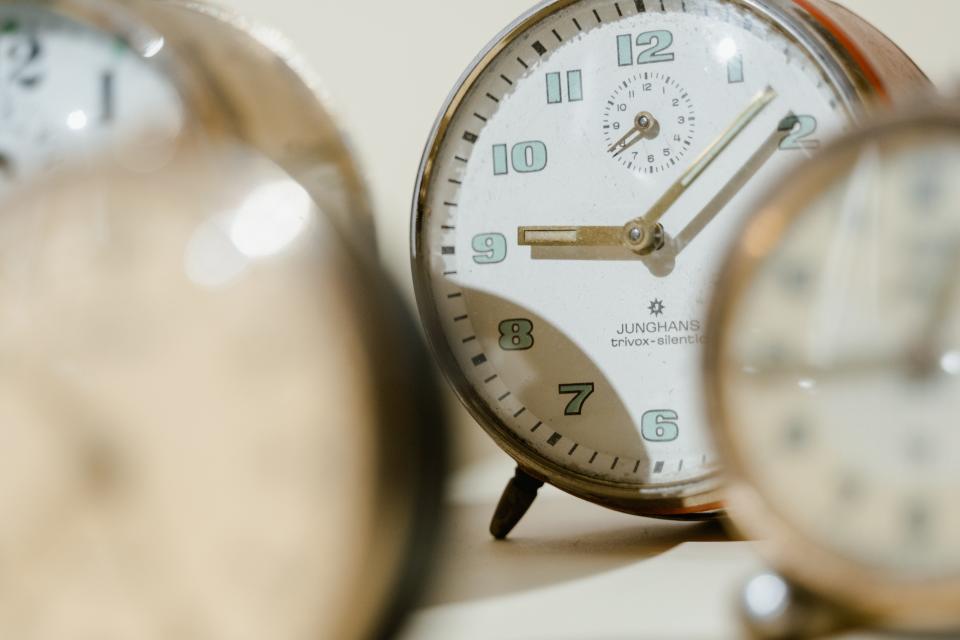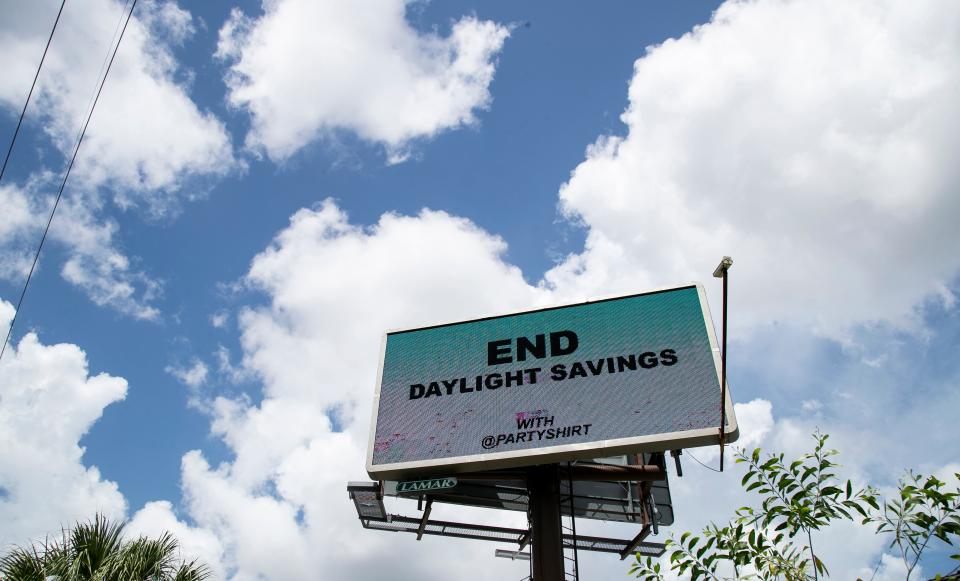Daylight saving time ends soon, but will it soon be the new normal? What to know
You wake up on a Sunday morning, turn over, and look at your phone.
For a brief second, you can't figure out why you're up so early or why you feel out of sorts. Maybe the confusion lasts a few groggy minutes, or even hours, before you realize there's nothing wrong with you.
It's the clocks. Again.
When is daylight saving time?
Daylight saving time ends for most of the United States at 2 a.m. on Nov. 6, which means another year of turning the clocks back and another four months of early sunsets as the weather starts to get colder.
But there's a new wrinkle this year: It might be the last time you have to turn the clocks back.
In March, the U.S. Senate passed the Sunshine Protection Act, which would permanently keep the country in daylight saving time and end the biannual clock-turning. The measure, championed by Sen. Marco Rubio, R-Fla., passed by unanimous consent. Some senators didn't realize until afterward what the bill actually entailed.

While the bill is yet to receive a vote in the House, the Senate bill is the furthest the country has come in more than 40 years to ending our long national nightmare.
"Do we still need to spring back or fall back in the first place? It's a question that many of us ask every time we have to do it," U.S. Rep. Frank Pallone, D-NJ, said at a congressional hearing on daylight saving time in March. "And it's getting harder and harder to justify."
Under standard time, the sun will rise in New York's Hudson Valley at, roughly, 7:18 a.m. and set at 4:30 p.m. on Dec. 21, the shortest day of the year, with those times varying in other parts of the state.
With daylight saving time, the sun would rise at roughly 8:18 a.m. and set at 5:30 p.m.
The Senate vote in March has infused momentum into the push to stop the clock-turning for the first time in decades. It's not a new issue for states: According to the National Conference of State Legislatures, 28 states have active legislation in support of keeping daylight saving time all year.
Daylight saving in New York
And since 2015, daylight saving time bills and resolutions have been introduced in nearly every state.
New York is one of them: Several bills in the state Senate and Assembly have been proposed in recent years, including the 2021-22 session, which would put New York on standard daylight saving time permanently, or at least create a task force to investigate what that would mean for residents in the state.
State Sen. Joseph Griffo, R-Rome, proposed a bill in November 2021 that would create the year-round daylight time standard. In a release, he noted the bill "would be contingent upon a compact with neighboring states and the federal government passing legislation allowing states to adopt daylight saving time as the permanent standard measure of time."
"Studies and research has shown that permanent daylight saving time can decrease health concerns, enhance public safety, cut down on traffic-related accidents and provide a needed boost for local and state economies," Griffo said in the release. "It just makes sense to not have to change our clocks twice a year."
However, neither it, or an accompanying Assembly bill sponsored by Angelo Santabarbara, R-Schenectady, made it out of committee.

Daylight or standard?
In an era where "divisiveness" has become a dinner table conversation for many American families, there seems to be one area with which we can all agree: Turning the clocks back is the worst.
According to a Monmouth University poll, 61% of Americans support a measure to end the practice. But the question that remains is a little harder to parse out.
The Monmouth University poll, in March 2022, found 44% support a permanent move to daylight saving time, while 13% of poll respondents support switching permanently to standard time.
But an October 2021 poll from the Associated Press and NORC Center for Public Affairs put the split at 43% to 32% in favor of standard time.
Daylight saving time proponents say making it the new norm is a no-brainer: Less darkness means less crime, fewer car crashes and less energy used. More sunlight means more recreation and commerce.
"The net benefits of evening sunshine far outweigh their costs," said University of Washington law professor Steve Calandrillo, testifying at the congressional hearing on daylight saving time. "Any small, increased risk that evening sunshine creates is dwarfed by the benefits of living life during the early evening in more sunshine."
But who knows how long such appreciation for daylight saving time would last if made permanent: During the energy crisis of the 1970s, the U.S. stayed in it for two years.
About 79% of Americans favored the switch, a poll showed at the time. But by the time Congress instituted a new four-month standard time, daylight saving time had just 42% approval.
What is natural?
Daylight saving time opponents argue that our bodies are intrinsically linked to the sun and the seasons. Those early sunsets feel natural too, until we start messing with the clocks. The American Academy of Sleep Medicine believes permanent DST "disrupts the natural seasonal adjustment of the human clock due to the effect of late-evening light on the circadian rhythm."
But most health experts agree that settling into daylight saving time or standard time is better than changing the clocks twice a year. Dr. Xue Ming, a neurology professor at the Rutgers New Jersey Medical School, said our circadian rhythms are already out-of-sync: We're tuned to operate on a 24.5-hour biological clock, but our lives operate on a 24-hour calendar.
That extra adjustment with the clocks is enough to have a noticeable effect on some people, especially young children and seniors, she said.
"We train ourselves to align with the light and the darkness," Ming said. "When you push the clocks one hour forward or backward, everyone has to adjust."
And disrupting our circadian rhythms isn't just a nuisance: It's dangerous.
Sleep-deprived drivers cause more than 6,400 deaths and 50,000 debilitating injuries on American roadways each year. According to the National Sleep Foundation, sleep-deprived drivers cause more than 6,400 deaths and 50,000 debilitating injuries on American roadways every year.
And in 2004, a study by Rutgers University researchers posited that a permanent switch to daylight saving time would reduce pedestrian fatalities by 13% and motor vehicle fatalities by 3%.
Ming suggested people who have difficulty adapting use ambient light to help staying awake later or waking up earlier, depending on the time of year.
"Some of us don't do too well in the morning, in general. When you get up an hour earlier or later, it makes it that much harder," she said.
Mike Davis: mdavis@gannett.com
This article originally appeared on Asbury Park Press: Daylight savings time: When it ends, how it could become permanent

